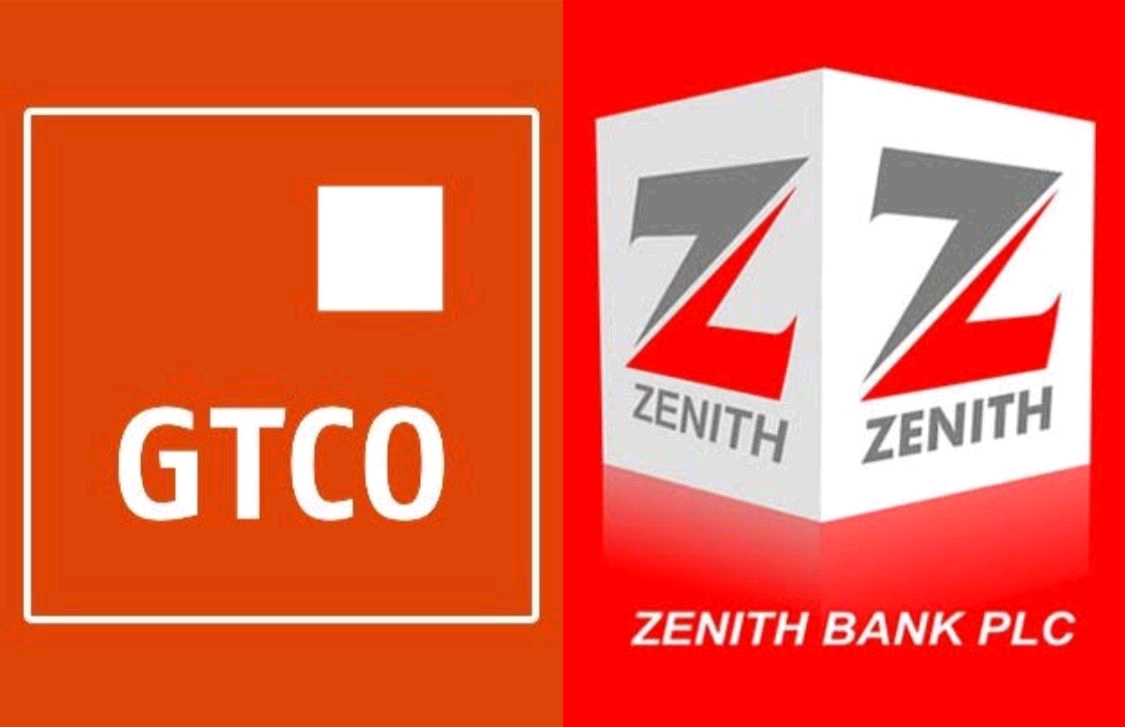For the first time in Nigeria’s history, companies are posting N1 trillion profit-after-tax. Two financial institutions—Zenith Bank and GTCO Holdings—have reported profit-after-tax exceeding N1 trillion. They posted N1.03 trillion and N1.02 trillion respectively for FY 2024.
The two most valuable banks in Nigeria reinforced their market standing with strong financial results. GTCO currently holds a market capitalization of N2.35 trillion, while Zenith Bank follows closely with a market cap of N1.93 trillion
This surge in profitability is attributable to the high-interest rate environment. In FY 2024, Zenith Bank and GTCO posted net interest incomes of N1.73 trillion and N1.06 trillion, respectively. For Zenith, this marks a 135 percent growth from the N707.5 billion net interest income posted in 2023. GTCO’s net interest income grew by 142 percent from the N437 billion posted in 2023.
GTCO and Zenith Bank are not the only beneficiaries. UBA’s net interest income grew by 116 percent in 2024, as it hit N1.53 trillion. Stanbic IBTC Bank also posted a net interest income of N394.1 billion in FY 2024. It marks a 140 percent growth from the N164.5 billion net interest income recorded in 2023.
In their unaudited account, FBN Holdings and Wema Bank posted net interest incomes of N1.39 trillion and N170.2 billion, respectively. This marked 155 percent and 86 percent growth, respectively, from their 2023 figures. Essentially, with benchmark interest rates moving from 18.75 percent to 27.5 percent in 2024, Nigerian banks capitalized and delivered unprecedented results.
Beyond lending, debt securities became a significant profit driver in 2024. Here’s a breakdown of the factors fueling this historic profit milestone.
1. Higher Interest Rates
Higher benchmark rates drove profitability for banks. It not only drove an increase in lending rates but also higher yields on government securities.
In 2024, Zenith Bank’s interest income surged to N2.72 trillion, more than doubling from N1.14 trillion in 2023. With a net interest margin of 43.5 percent (up from 34.5 percent in 2023), interest-earning assets made a more significant contribution to profitability than before.
The bank expanded its investment securities holdings by 55 percent to N5.1 trillion, generating N1.04 trillion in interest income from these assets—a 166 percent increase from N390.6 billion in 2023. Meanwhile, its loan book grew by 52 percent to N9.97 trillion, contributing N1.52 trillion in interest income.
GTCO exploited government securities even more, growing its investment securities portfolio by 68 percent to N4.15 trillion. It generated N582.9 billion in interest income from these assets—a 230 percent increase. Although it still printed cash from its loan book. While its loan book grew by 12 percent to N2.79 trillion, interest income from loans and advances grew 71 percent to N515.7 billion.
UBA’s strategy also reflected this shift. The bank expanded its loan book by 35 percent to N7.51 trillion, but its securities holdings grew by 69 percent to N12.5 trillion. As a result, interest income from loans stood at N1.02 trillion, while investment securities yielded N1.2 trillion.
Essentially, the banks increased their holdings of risk-free government securities, favoring stable returns over aggressive lending.
2. Non-Interest Income (Trading, fees and commission income)
While interest income drove most of the profit growth, non-interest income—particularly trading gains and fees/commission income—remained an important contributor.
GTCO’s net fees and commission income rose by 73 percent to N189.7 billion, but trading gains grew at a slower 39 percent, reaching N86.2 billion from N62.2 billion in 2023.
However, in Zenith Bank, with a net interest margin of 43.5 percent, non-interest income is a huge earnings contributor. The group posted a trading gain of N1.1 trillion, marking a 94 percent growth from the N567 billion recorded in 2023. The group posted a trading gains margin of 27.7 percent, a slight increase from 26.6 percent as of 2023. Zenith’s net fees and commission income grew by 89 percent to N207 billion, from N109 billion as of 2023.
Trading gains originate from activities like foreign exchange (Forex) trading, fixed-income securities, and derivatives, traditionally serving as a key revenue stream for banks. However, in the current high-interest lending environment, banks are shifting their focus away from trading, prioritizing core lending operations instead. For example, UBA’s trading gains dropped by 72 percent to N181.8 billion, from N659.3 billion as of FY 2023.
Following the naira’s devaluation in 2023, banks benefited from surging foreign exchange trading gains. However, with a more stable FX environment in 2024, this revenue stream is playing a smaller role. Despite this, Zenith Bank remains heavily invested in trading, generating N1.12 trillion from Forex trading alone, up from N463 billion in 2023.
3. Asset Quality
Beyond income growth, GTCO’s exceptional asset quality and efficiency metrics played a key role in its profitability. Despite having a total asset base of N14.8 trillion—far below UBA’s N30.3 trillion and Zenith Bank’s N30 trillion—GTCO’s profitability metrics outshine its peers.
GTCO can be described as an efficiency freak, with its cost-to-income ratio (23.3 percent) and its Return-on-Assets (8.3 percent) being the lowest and highest, respectively in the Nigerian banking scene.
Additionally, GTCO has a more conservative lending approach, reflected in its low loan-to-deposit ratio (27.8 percent), compared to Zenith’s 45.3 percent and UBA’s 34.3 percent. This risk-conscious strategy helps the bank maintain lower impairment costs.
In 2024, GTCO’s impairment-to-net interest income ratio stood at 12.9 percent, significantly lower than Zenith’s 38.1 percent and UBA’s 16.6 percent, underscoring its focus on asset quality over rapid loan growth.
These two banks, Zenith Bank and GTCO Holdings, leveraged higher interest rates, strategic investments in government securities, and operational efficiency to deliver record-breaking profits. While interest income remains the primary driver, fees, trading gains, and asset quality continue to play crucial roles in profitability.
Businessday


